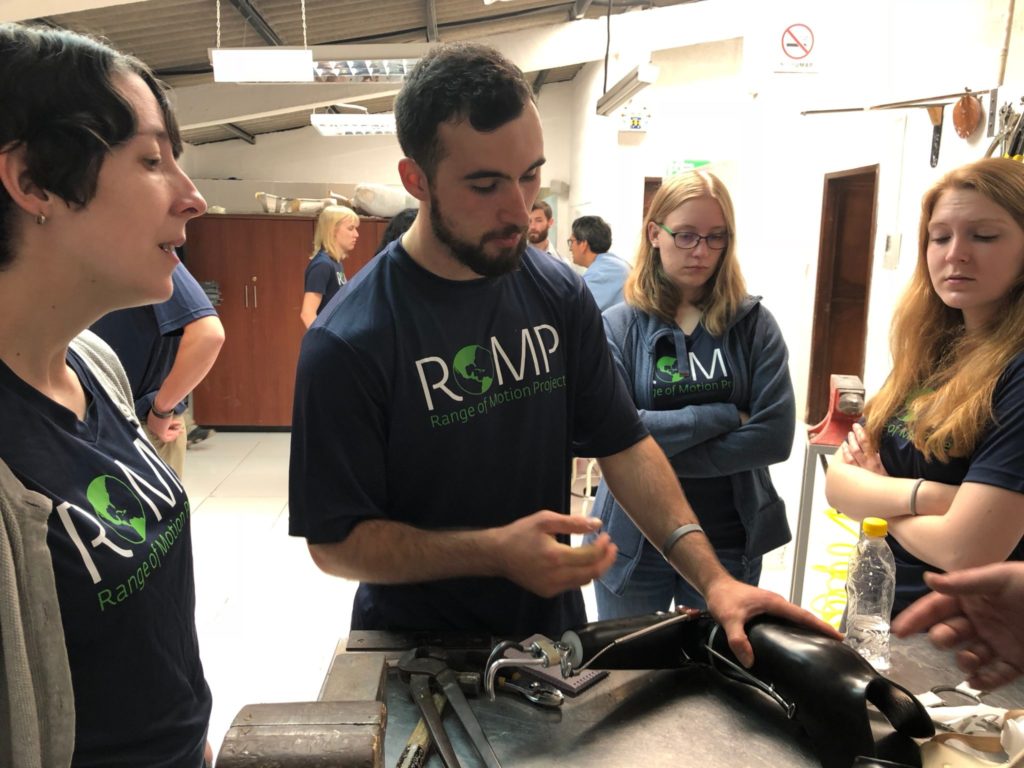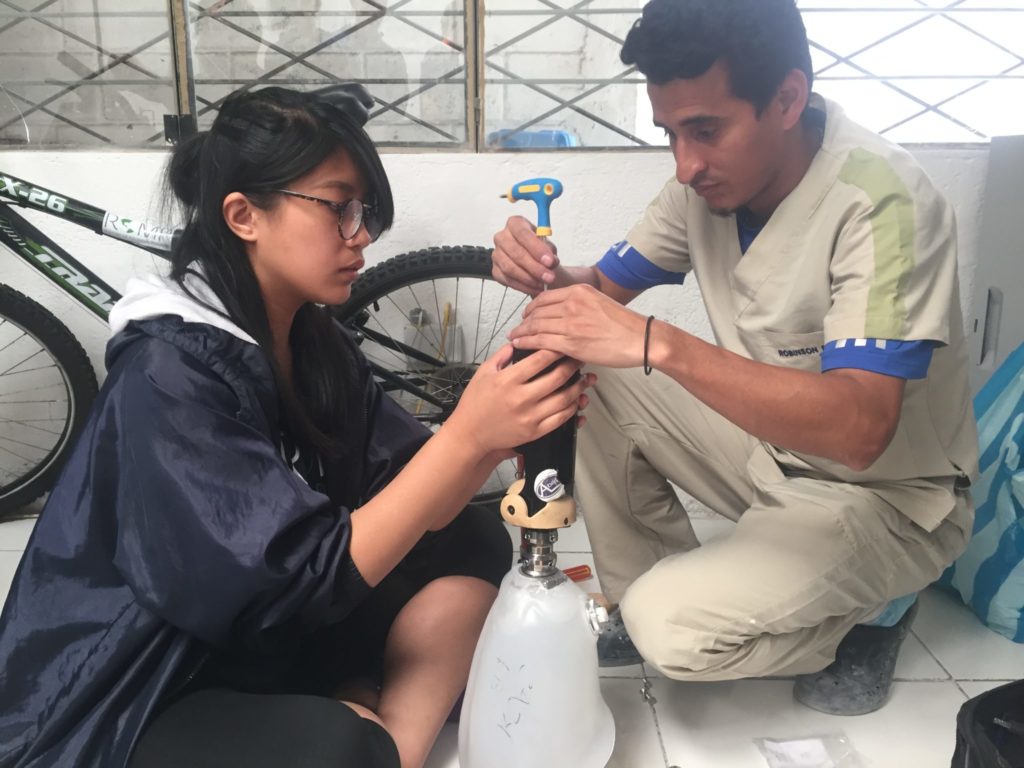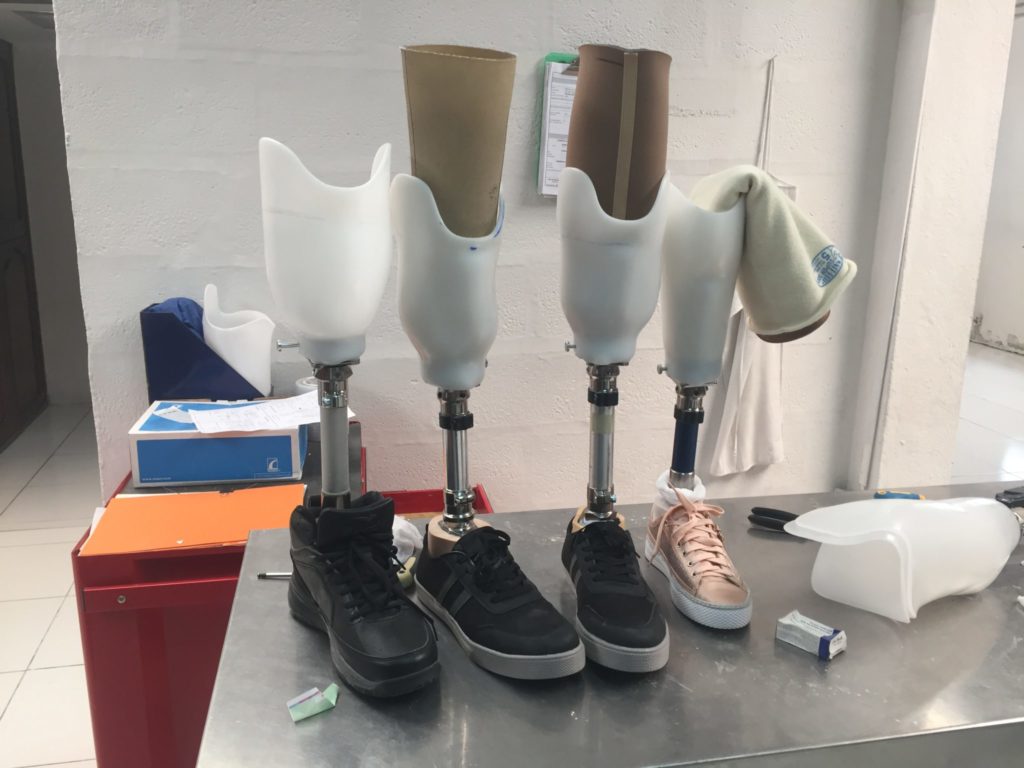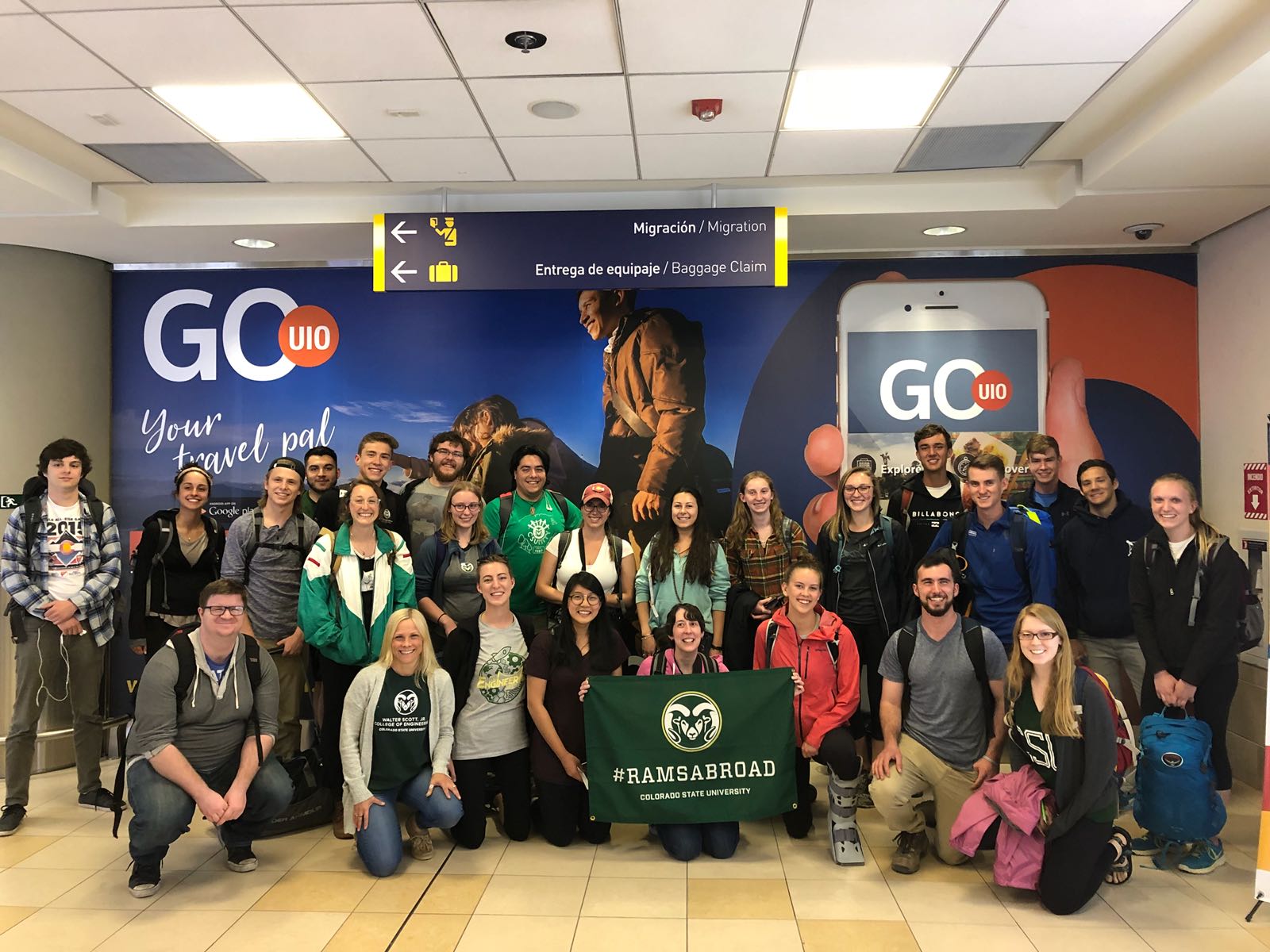
When his father passed away, Valentin Pilay suddenly found himself responsible for maintaining his family’s household. He was doing odd jobs wherever he could, and on the morning of March 14, 2014, his life would change forever.
“I was called to install some equipment and suffered severe electrical burns during the process. My mother came to the hospital and found my virtually lifeless body on a metal bed,” said Pilay. “When I came to, I learned my hands were burned off in the accident.”
Pilay’s experience is one example of unfortunate circumstances leading to limb amputation in developing countries. In Ecuador, where Pilay resides, there are 205,664 people with physical disabilities currently registered in the CONADIS, or Ecuadorian National Disability Council database. Fifty-two percent are between the ages of 30 and 65. Prosthetic devices are expensive, and many like Pilay don’t have the means to afford quality health insurance or health care.
Prosthetic innovation in Ecuador
To improve quality of life for amputees like Pilay, the Range of Motion Project (ROMP) has locations in Guatemala, Ecuador, and the U.S. that provide prosthetic and orthotic care to those without access to these services. In May, the School of Biomedical Engineering led a study abroad course in Quito, Ecuador to work with ROMP volunteers and learn how to build and fit prostheses for patients, including Pilay.
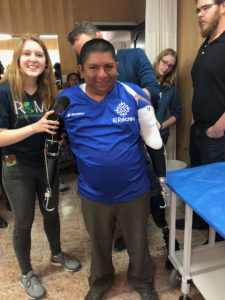
The Prosthetic Innovation in Ecuador program was developed by undergraduate advisor Deb Misuraca. She was looking for a way to marry experiential learning, in high demand for engineering students, with an opportunity to study abroad. Study abroad for engineering students is hard to come by due to their demanding course load.
“Our undergraduate director Kevin Lear once asked me what I thought was important for students in higher education, and I explained how important I thought experiential learning, studying abroad, and service learning are for students,” said Misuraca. “And he basically said, ‘Great. Go for it and let us know how we can support you.’”
Misuraca partnered with Ellen Brennan-Pierce, an instructor and research scientist in the Walter Scott, Jr. College of Engineering, to transform her idea into reality by developing a curriculum for the study abroad course. The duo also wanted to give students the opportunity to utilize the experience as a basis for their Senior Design projects the following academic year.
Practicing passion for providing prosthetics
On May 19, Misuraca, Brennan-Pierce, and 24 engineering and health and exercise science students set out for Quito, Ecuador, where they spent a week learning about prosthetic devices. They gained experience with patients, from arrival and fitting, through casting and molding, and finally physical therapy and mobility.
“Working with the patients was really valuable, and it was rewarding to see them take their first steps after being fitted with a prosthetic,” said David Kimmey, biomedical and mechanical engineering student.
Being involved throughout the process allowed students to better understand patients’ needs. Through the physical therapy portion, they could troubleshoot the functionality of prosthetics and learn what needed to be improved. Students could also apply that knowledge to the bigger picture of creating and distributing life-changing technologies for health applications.
“I want to learn more about how self care can be put in place to be impactful,” said Kimmey. “You can have good technology, but if you can’t use it well or distribute it, it’s useless.”
Many of the students felt that the program was a life-changing experience, and it helped some solidify their passion for biomedical engineering and pursuing a career in industry. The program is set to run again next summer, and is open to all CSU students. This fall, Brennan-Pierce hopes to secure funding for a biomedical engineering Senior Design project centered on designing better prosthetics more efficiently and less expensively, inspired by the Prosthetic Innovation in Ecuador program.
“One of the major issues facing engineers is that oftentimes those in first-world countries don’t understand the needs in developing countries,” said Misuraca. “Through this program, students are understanding the need for this sort of work.”
To support the Prosthetic Innovation in Ecuador study abroad program, or learn more about the 2019 experience, contact Deb Misuraca at Debra.Misuraca@colostate.edu or Ellen Brennan-Pierce at Ellen.Brennan-Pierce@colostate.edu.



